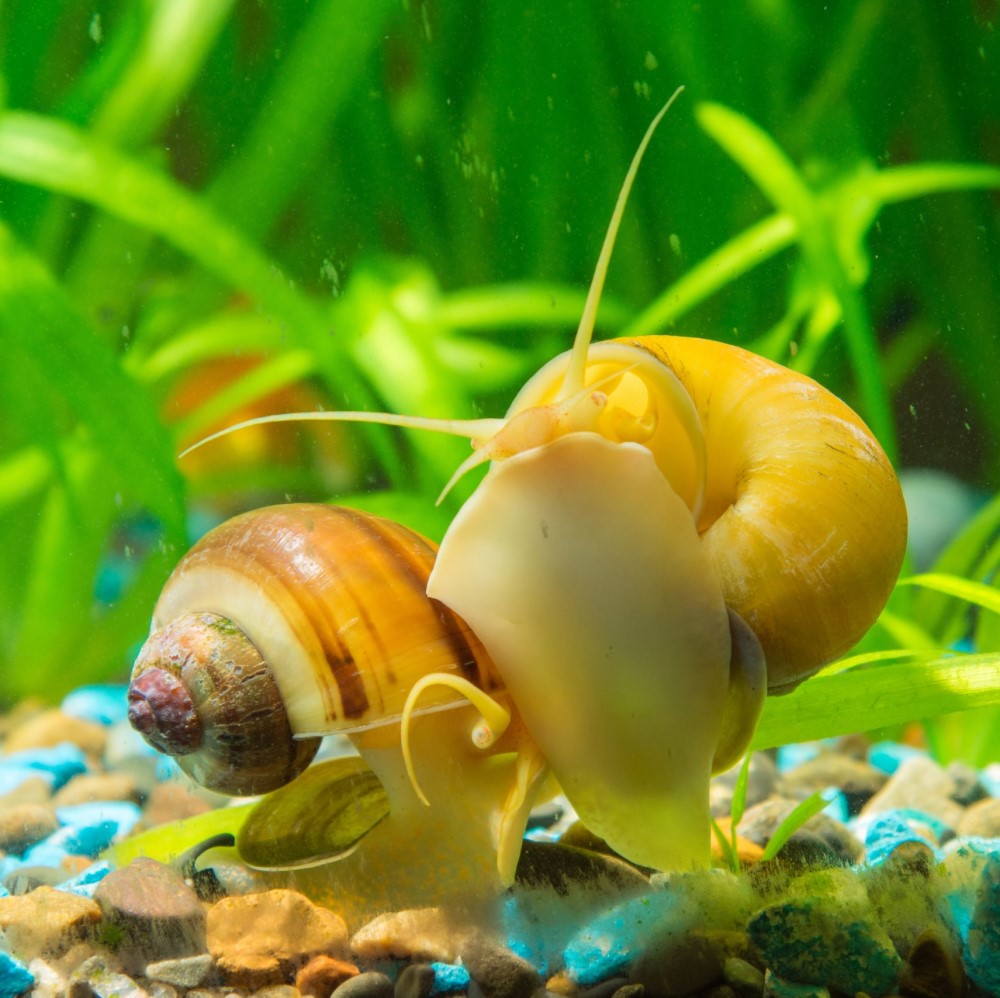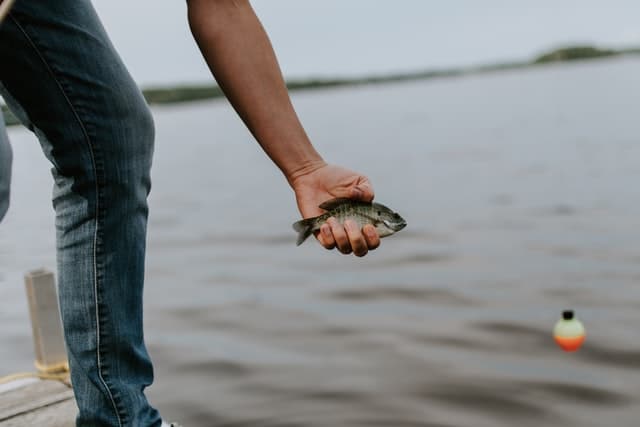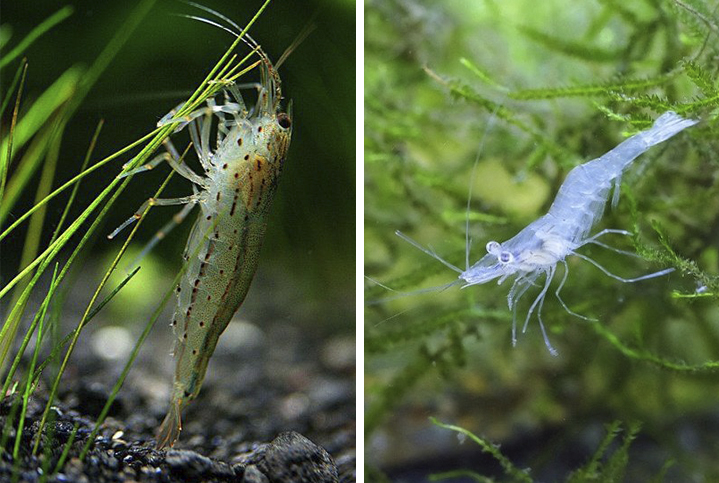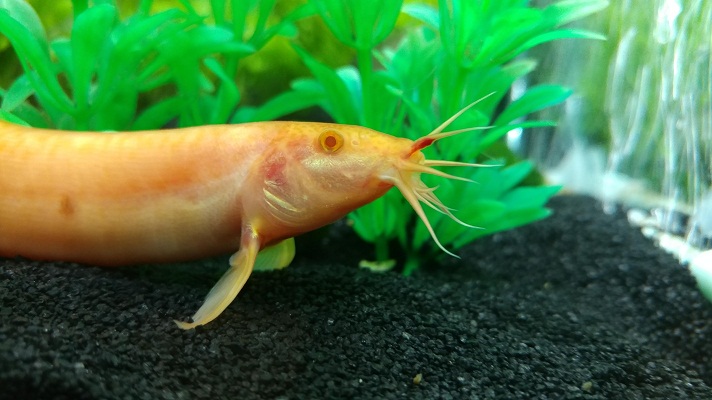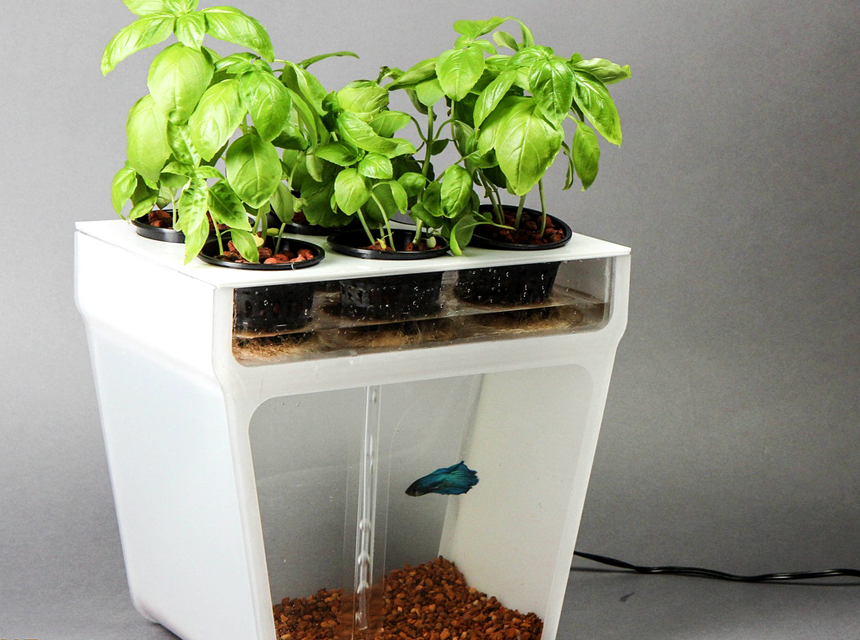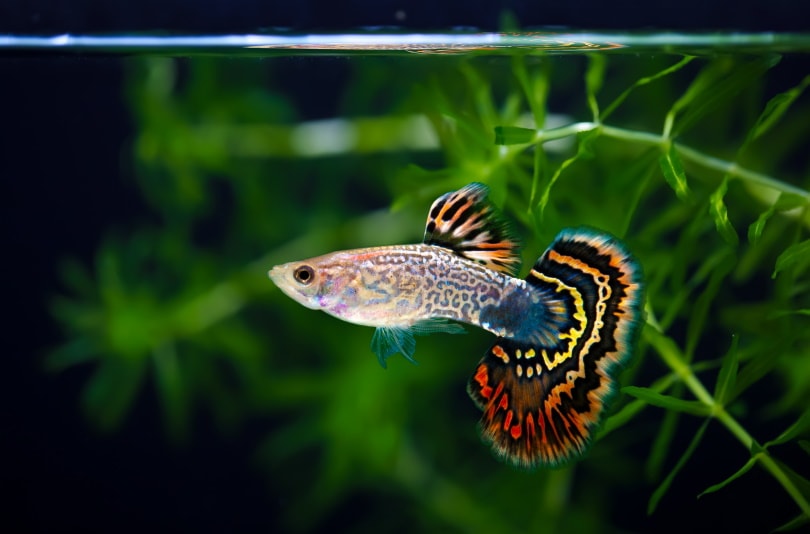

Would you like to learn how to grow guppy grass? Freshwater aquarium plants like the Najas guadalupensis are amazing and have several benefits for fish. Live plants rid water of nitrates to improve water quality and reduce algae growth. But guppy grass, named due to its use in the aquarium with guppy fry, is known for its fast growth, ease of propagation, and how they reduce the nitrogen cycle of fish tanks.
They also increase oxygen levels in the aquarium and make fun hiding places for fry fish. It is easy to grow, and this is a fun activity that will make you and your fish happy. But first, what is guppy grass?
Guppy grass is easy to grow aquatic plant found mainly in the Americas. It does not use its roots to feed so that it can be grown without substrate, but it can be invasive in the aquarium as in nature. What are the origin, taxonomy, growth form and propagation, size, and growth speed of this grass? You’ll find out below:
Najas guadalupensis is, as its name suggests, a plant native to Guadeloupe but not only that. It grows naturally in calm and shallow waters (marshes, irrigation canals, slow-flowing ponds, and rivers) from Northern America to Central America and the southern United States.
It is native to Central America, Mexico, and most of the contiguous United States, the West Indies, and South America. It is nevertheless found as far south as Canada, from Alberta to Quebec. It has been imported to Japan, Israel, and Palestine and introduced to Temperate Asia.
| Kingdom | Plantae |
| Class | Liliopsida |
| Order | Najadales |
| Family | Najadaceae |
| Subfamily | Hydrilloideae |
| Genus | Najas |
| Species | N. guadalupensis |
| Descriptor | (Sprengell) Magnus |
| Description year | 1870 |
| Scientific name | Najas guadalupensis |
| Basionym | Caulinia guadalupensis |
| Synonyms | Caulinia guadalupensis, Najas arcana, Najas flexilis var. guadalupensis, Najas microdon, Najas punctata, Najas urbaniana |
| Common names | Guppy grass, southern water nymph, najas grass, and common water nymph. |
This plant is a pure aquatic plant that doesn’t use its roots for food but grows at a fast rate. It is, therefore, one of the few species that does not need nutritious soil to thrive. It can be grown in a floating form like the Ceratophyllum, a more popular plant used in aquariums that is similar to guppy grass. Like the latter and as it does in nature, the Najas guadalupensis protects fish fry such as the fry of Guppy, platy, and molly.
Guppy grass prefers soft water but adapts quite easily to harder water with excellent tolerance to limestone and even slightly salty (it supports an addition of NaCl). It is not too demanding either with regard to light.
The planting substrate is of little importance and is not necessary. It can be left floating or anchored between plants on the surface. It is better grown as a floating plant in a column of water or between tall plants than planted on the bottom. When placed in the substrate, it will soon break off because it has a very fragile stem (to be handled with care), and therefore it is not suitable for a strong flow of water in the aquarium.
This fast-growing aquarium plant is, however, not suitable for ornamental aquariums. On the other hand, it is ideally suited to reproduce viviparous fish like the genus Poecilia.
When N. guadalupensis is used in ponds or garden ponds, it is advisable to place it in an indoor aquarium to practice overwintering for this annual species.
We are talking about a fast-growing plant that can measure about 30-33 inches, depending on the conditions that are given to it. The plant can even reach a height of even more than 1 meter. It is a plant with very fine leaves 2 to 3 cm long and extremely thin.
The guppy grass can multiply if it finds the right environment. You need to be careful not to let it overpower the other plants in the tank, which, although invasive, could suffocate them. So regular pruning of najas guadalupensis is the only way to avoid problems with them in the aquarium.
The guppy grass needs the ideal conditions to grow, including proper lighting, temperature, tank size, chemical conditions, and more.
Like other plants, those growing in an aquarium need light to survive. It allows them to carry out photosynthesis, a process by which they receive energy and nutrients.
Guppy grass are lovely plants because they grow strongly (the more sun, the better) but also grow well in the shade. They’re ideal for “quickly” cycling a tank.
The ideal temperature for growing guppy grass is between 50 degrees to 86 degrees Fahrenheit Trusted Source The Complete Guide to Guppy Grass Care | Fishkeeping World www.fishkeepingworld.com . So, you should consider what temperature would work best for your aquatic animals. Guppy grass doesn’t grow well in too cold or too warm conditions. If the water is getting below 50 degrees, then you need to get one of the best aquarium heaters. During hot summers, you must find a way to cool down the temperature. It’s always ideal that you test the waters with a kit. The aquarium thermometer is a must-have for aquarists. If you don’t have one, make an order from this list of the best aquarium thermometers.
The optimal chemical conditions for guppy grass that also ensure a great match with their habitat are:
Meanwhile, note that guppy grass can easily tolerate both soft and hard water. So, the consideration should be your aquatic animals.
Chlorine and heavy metals can harm or kill the animals and plants. So it’s advisable to use water conditioners. You can find one from our list of the best aquarium water conditioners.
The guppy grass is a plant that can be placed in the tank in a floating form. It can also be planted Trusted Source Guppy Grass: The Perfect No-Maintenance Plant - Tank Addict Guppy grass is a fast-growing beginner plant that removes heavy metals, toxins, ammonia, nitrite, and nitrates from the water while producing oxygen. tankaddict.com or made to be weighed down by plant weights. But it doesn’t need substrate to grow. Just let it have light for photosynthesis and the necessary water conditions.
The guppy grass is a fast-growing grass. So it will need a minimum of 15-gallon tank. And you need to have it pruned regularly, or it will overtake your take.
The difficulty of growing guppy grass can be said to be easy. The growing pace is fast. It will grow without problems if you give it good conditions (water and light conditions). This is a very easy plant to maintain, which is why it is recommended for beginners.
Najas guadalupensis is not a complicated aquatic plant to grow. Here is the step-by-step for growing it.
You can buy guppy plants anywhere. It’s a staple of many aquariums, so you can find them in pet stores selling aquarium plants. You can also order it online.
Before making a purchase, research the seller to ensure they have a good reputation and are selling clean, healthy plants.
Make sure the grass is compatible with your fish because some of these animals eat or destroy plants. Goldfish, cichlids, and silver dollars, for example, will eat your guppy grass Trusted Source Guppy Grass (Najas Guadalupensis): Care Guide – Fish Laboratory Aquatics www.fishlaboratory.com .
Buy adult plants like the Aquarigram Guppy Grass. They will allow you to achieve the desired effect right away. Adult plants cost more than young plants but will enable you to create the desired environment immediately.
Choose specimens that have started producing buds and have white roots. However, note that guppy grass is sensitive to the transfer heat. Talk to the aquarium store about this.
You can also decide to buy guppy cuttings. It will take much longer to achieve the desired look, but this option will cost much less. To make cuttings, you need cuttings taken from an adult plant. You can buy it at an aquarium supply store or online. If you know someone who has an aquarium, you may be able to take cuttings from their plants.
Treat and quarantine them before placing them in the aquarium. New plants may already harbor pests that can threaten the health of your aquatic space, such as snails or shrimp. These animals can reproduce quickly and fill the aquarium unless your fish feed on them. They can also introduce bacteria or diseases into the water. A period of isolation will allow you to spot pests before introducing them. You can also treat the plants with a bleach solution.
To treat them, mix one-part bleach and 19 parts water. Dip each plant in the solution for 2 to 3 min depending on its sensitivity. Rinse it thoroughly with clean water before putting it in chlorine-free water.
To prevent snail infestations, soak plants in salt water after buying them. Dissolve one cup of aquarium or table salt in 4 liters of water. Dip each plant in the solution for 15–20 seconds, keeping the roots out of the liquid. Rinse it with clear water before putting it in the aquarium.
You can install the plants in the aquarium after a week of isolation.
Guppy plants don’t need to be planted or require substrate. But if you want, this is an option. Put a material good for plants at the bottom of the aquarium and cover it with gravel. The culture substrate is the product that will be used to line the bottom of the container. It should be rich in nutrients.
First, ensure you install suitable lighting. Like other plants, those growing in an aquarium need light to survive. It allows them to carry out photosynthesis, a process by which they receive energy and nutrients. A low-medium LED aquarium light is excellent. A good model for this situation is the NICREW ClassicLED Aquarium Light because it is dimmable. Sunlight streaming through windows can also benefit these plants.
Ensure the water has the ideal conditions as discussed earlier (50-86°F, pH levels of 6-8.0; 5-12 dKH).
Depending on what you’ve chosen, place the grass on the water or root them in the medium. You can, however, choose to root the plant cutting in the growing medium to be able to absorb the necessary nutrients.
Position their roots just below the surface of the substrate, but don’t push them too deep.
Put them in the aquarium a week after the plants so that the medium has time to stabilize. After installing all the plants, wait a week before buying fish. If you already have them, keep them in a temporary aquarium. Otherwise, buy them when the environment you created is ready.
The excrement of these animals will partly nourish the plants. Don’t introduce the fish too early. Plants must establish a nitrogen cycle Trusted Source Fish Nitrogen Cycling | New Tank Syndrome | PetMD Similar to “old tank syndrome,” new tank syndrome is a fish disease that occurs in aquarium fish that live in water with high levels of ammonia www.petmd.com , a process by which conditions in the water become stable and do not pose a risk to animals. Very few fish can survive until conditions are stable. Thankfully, guppy grass helps achieve a faster nitrogen cycle.
The video below shows how to grow and propagate guppy grass.
Guppy grass grows quite fast. It must therefore be regularly pruned. Cut the parts that protrude from the aquarium to prevent them from decomposing. When a plant outgrows the aquarium, the part above the water dies. Carefully cut off the protruding parts with sharp scissors.
Fertilization with liquid fertilizers is recommended but not mandatory. The diffusion of CO 2 in its aquarium is not imperative. It thrives in many different conditions if the water does not exceed 86 degrees Fahrenheit. This is the only criterion that must be met, so consider cooling the aquarium during the summer. It likes soft water more but still grows well in hard water.
Note that it is possible that the plant loses its leaves at the time of planting. This is a normal phase in its adaptation, and new, stronger shoots and stems will quickly replace them.
Najas guadalupensis is an aquatic plant par excellence. It can be grown by a beginner and has low maintenance needs, except the need for pruning. It is perfect as a floating plant in a Guppy aquarium. It does not need firm roots in the substrate to thrive, but it can also grow as a floating plant. It doesn’t need fertilizer or CO2 to grow like other plants.
In aquariums, the najas guadalupensis can act as shelter and protection for the fry of guppies platy and molly. It can live very well in various ranges of water values. The important thing is that it does not exceed 86 degrees.
It is very invasive because it produces a large vegetative mass quickly. If it likes its environment, the Najas guadalupensis takes control over the other aquatic plants and becomes the only species (monospecific) like the Elodea canadensis in other geographical areas. It even prevents river navigation in certain places, and drainage canals regularly need to be cleared so as not to be completely blocked. This plant manages to stop the current and bring the rivers out of their beds!
On the other hand, the Najas guadalupensis is not only a harmful species. Its compact vegetative mass offers a formidable place of life for many species of fish, fry, and invertebrates. Under it, they find an excellent refuge to protect themselves from predatory animals.
Guppy grass is not ideal for tanks with goldfish, tilapia, rosy barbs, cichlids, and silver dollars. These animals will most likely eat the guppy grass. But it’s compatible with other plants and aquatic animals that need low to medium lighting. Guppy grass is compatible with tanks that have freshwater crab and crayfish. It’s also compatible with freshwater fish species such as otocinclus catfish, tetra fish, cardinal fish, platies, and dwarf shrimp.
Those who want to know how to plant guppy grass or whether it’s hard to grow can heave a sigh of relief. You don’t even need to plant it.
Najas guadelupensis is a pure aquatic plant that does not use its roots for food or very little. It is, therefore, one of the few species that does not need nutritious soil to thrive. It can be grown floating.
Medium lighting will suffice. Ideally, the lights should be on for at least eight to twelve hours per day.
Note that under medium light, it will be green, but under strong light, it will take on a reddish tint, which will precede a halt in growth. The supply of CO2 is not essential.
